Today, we’re diving into the fresh waters of Lake Michigan to explore its fishy inhabitants. Now, I’m not talking about shady characters—I mean the literal fish!
Whether you’re an angler hoping to reel in a big catch, an environmental scientist, or just someone fascinated by wildlife, you’ll find this rundown of the most common fish species in Lake Michigan incredibly intriguing. Let’s cast our nets and set sail into the heart of one of America’s Great Lakes!
The Ecological Wonderland of Lake Michigan

Lake Michigan is not just a lake; it’s a freshwater marvel! This vast body of water is part of the Great Lakes system, which holds about 21% of the world’s surface freshwater. Imagine the sheer volume of life it sustains.
In terms of fishing alone, Lake Michigan offers over 50 species to target, making it an angler’s paradise. But beyond the fishing rods and tackle boxes lies an intricate and resilient ecosystem.
- Geographical Context: Lake Michigan is the only one of the Great Lakes located entirely within the United States. It borders Michigan, Illinois, Indiana, and Wisconsin.
- Habitat Diversity: From shallow bays to deep, open water, the lake offers a wide variety of habitats. Each of these environments is home to a unique set of fish species that have adapted to thrive there.
- Human Interaction: As with many other ecosystems, human activity affects Lake Michigan, from fishing and boating to pollution. Management strategies, including stocking and conservation measures, aim to maintain a balanced and healthy aquatic ecosystem.
Methodology: How We Compiled Our List
With such a rich and diverse array of underwater denizens, you might be wondering how we settled on just 15 to feature. To do this, we considered several factors:
- Population Size: Fish that are more numerous naturally top the list.
- Ecological Importance: Some species play a critical role in maintaining the lake’s ecosystem.
- Popularity Among Anglers: Certain fish are a big draw for local and visiting anglers, so they make our list by virtue of their “celebrity status” in the fishing world.
With these criteria in mind, we consulted scientific literature, spoke with local fisheries biologists, and even conducted a few interviews with seasoned anglers to bring you a list that is as comprehensive as it is compelling.
1. Yellow Perch
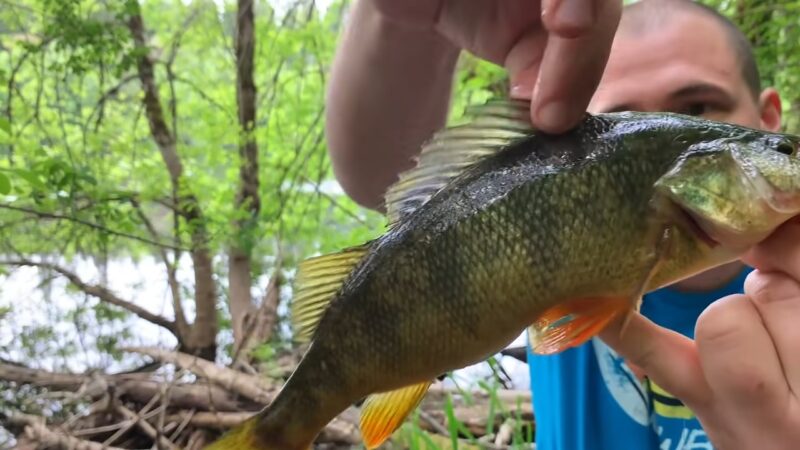
The Spotlight Species
If Lake Michigan had a mascot, Yellow Perch would be it! These are the fish that make families huddle together at the shorelines, kids casting their fishing lines with glee.
Ecological Role
Yellow Perch are a vital part of the food web. They feed on smaller fish and aquatic insects while serving as a meal for larger fish species.
The Angler’s Favorite
Ask any angler, and they’ll tell you that Yellow Perch are among the easiest and most rewarding fish to catch. They are good for beginner fishermen, and their meat is considered exceptionally tasty.
2. Lake Trout
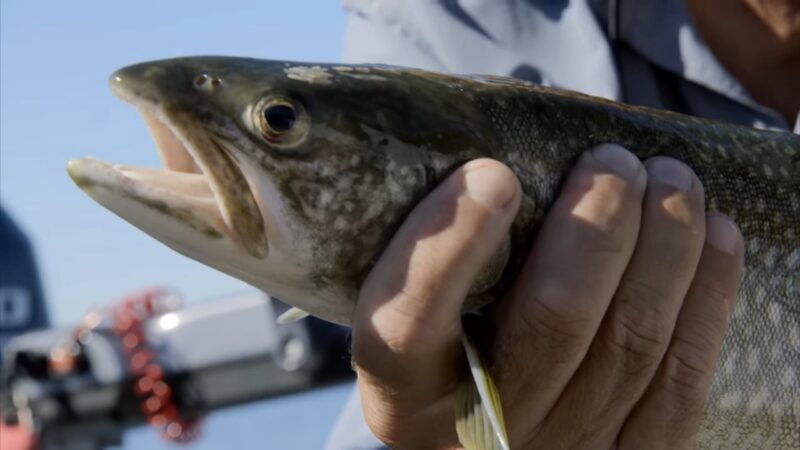
The Stalwart Native
Lake Trout are native to the Great Lakes and are often considered the apex predator among Lake Michigan’s fish.
Surviving Challenges
Once upon a time, Lake Trout populations plummeted due to overfishing and invasive species. However, thanks to concerted conservation efforts, their numbers are rebounding.
The Angler’s Trophy
Catching a Lake Trout is an exhilarating experience. They put up a good fight and are among the most sought-after trophies for sport fishermen.
3. Chinook Salmon

The Out-of-Towner
Introduced in the 1960s to control the Alewife population, Chinook Salmon are not native to Lake Michigan but have become an integral part of its ecosystem.
A Two-World Citizen
These fish are anadromous, meaning they can live in both freshwater and saltwater. Though not native, they’ve adapted well to Lake Michigan.
The Big Catch
Chinook Salmon are prized by anglers for their size and fighting spirit. Plus, they are a delightful treat to cook and eat!
4. Alewife
The Invasive Agent
Originally from the Atlantic Ocean, Alewives have been in Lake Michigan for decades and are often considered an invasive species.
Food Web Contributor
Despite their invasive status, Alewives serve as a primary food source for many larger fish in the lake, including the Chinook Salmon and Lake Trout.
A Double-Edged Sword
While they do provide a food source for larger species, their overpopulation can sometimes result in mass die-offs, which is a concern for water quality.
5. Smallmouth Bass
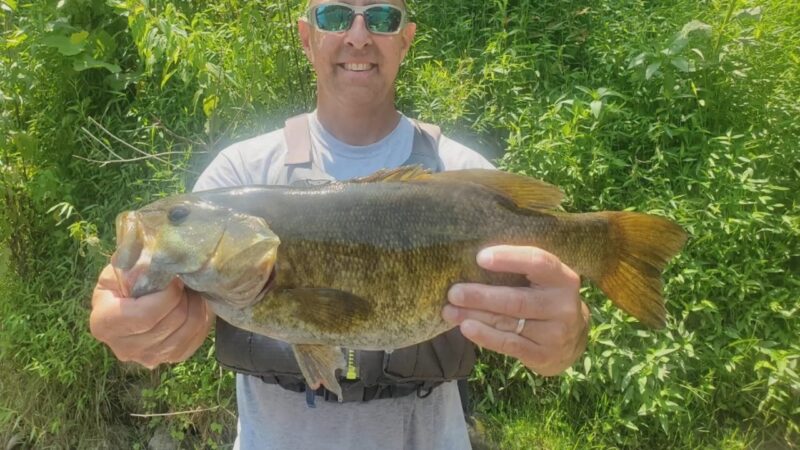
The Scrapper
Smallmouth Bass are known for their aggressive nature and are a thrill to catch.
Ecological Niche
They predominantly feed on smaller fish and crustaceans, and their preferred habitats include rocky areas and clear waters.
An Angler’s Challenge
Smallmouth Bass are wily and put up an incredible fight when hooked, making them a popular target for sport fishing.
6. Rainbow Trout
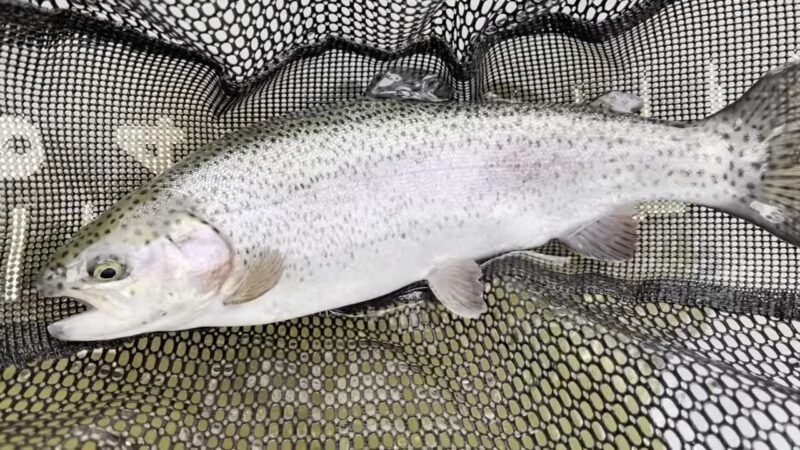
The Vibrant Visage
Rainbow Trout are easily identifiable by their colorful, almost iridescent skin. While not native, they have become a notable part of Lake Michigan’s ecosystem.
The Omnivore
These fish have a diverse diet, feeding on everything from small fish to aquatic insects and crustaceans. This adaptability makes them a versatile component of the food web.
A Fly Fisher’s Dream
Rainbow Trout are often the target of fly fishers due to their agile movements and the challenges they pose. They’re also known for their delicious taste, especially when smoked or grilled.
7. Coho Salmon

The Cousin of Chinook
Coho Salmon are close relatives of Chinook Salmon and are another anadromous species that has become well-established in Lake Michigan.
A Symbiotic Relationship
Coho Salmon often share habitats and food sources with Chinook, and their life cycles are closely aligned, often helping to balance the ecological scales in each other’s favor.
A Sport Fisherman’s Joy
Coho is another popular target for sport fishermen, and they offer a different fight compared to Chinook, providing a thrilling experience for anglers.
8. Northern Pike
The Aquatic Predator
Northern Pike are ferocious predators, known for their aggressive hunting techniques. They have sharp teeth and a voracious appetite for smaller fish.
The Ecosystem Balancer
By preying on smaller and often invasive species, Northern Pike play a crucial role in maintaining a balanced food web in Lake Michigan.
Angling for a Thrill
If you’re an angler seeking a thrilling catch, look no further than the Northern Pike. Their aggressive tendencies make them a challenging, yet rewarding catch.
9. Walleye
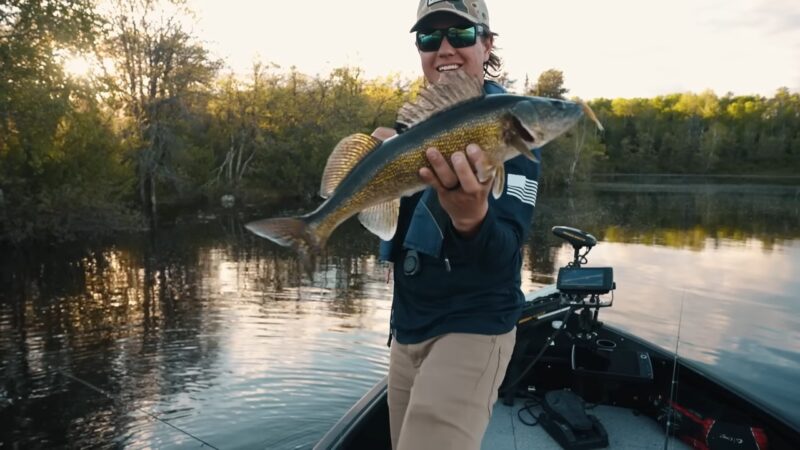
Nocturnal Behavior
Walleye are unique because they are primarily nocturnal, feeding at dawn and dusk, which makes them different from most other fish species in Lake Michigan.
Diet and Habitat
They usually feed on smaller fish and tend to stay in deeper waters during the day, migrating to shallower areas to feed.
Fishing Under Moonlight
Anglers looking for a unique experience often target Walleye. Fishing for them usually requires different techniques, often making the experience all the more rewarding.
10. Whitefish
The Taste Sensation
Whitefish are considered a delicacy and are one of the most commercially fished species in Lake Michigan due to their fine-flavored flesh.
Spawning Habitats
They prefer colder waters and are usually found in deeper parts of the lake, especially during their fall spawning season.
A Commercial Catch
While sport fishing for Whitefish is common, they are also a significant part of the commercial fishing industry in Lake Michigan, providing a livelihood for many local fishermen.
11. Rock Bass
Often Overlooked
Rock Bass don’t get as much attention as their larger or flashier cousins, but they are an important part of Lake Michigan’s ecosystem.
Diet and Predators
They feed on smaller fish and aquatic insects and serve as prey for larger fish, thus occupying a middle position in the food chain.
Easy to Catch
Rock Bass are relatively easy to catch and are often considered great for beginner anglers, making them a staple in fishing communities around Lake Michigan.
12. Round Goby
The Uninvited Guest
Round Goby are considered invasive in Lake Michigan. Originating from Eastern Europe, they have proliferated rapidly since their arrival.
Ecological Impact
While they are a food source for larger fish, they also compete aggressively with native species for resources, posing a concern for ecological balance.
The Debate Continues
Round Goby are a contentious subject among scientists and fishermen alike. Their rapid proliferation has raised concerns, but their role in the food web is still not fully understood.
13. Bluegill

Family Fishing
Bluegill are the perfect target for family fishing outings. They’re abundant and easy to catch, providing a lot of action for young anglers.
The Omnivore
Bluegill has a varied diet that includes aquatic insects, making them an important part of the food web.
Social Butterflies
These fish often form schools, providing a fantastic visual spectacle for divers and snorkelers in Lake Michigan.
14. Largemouth Bass
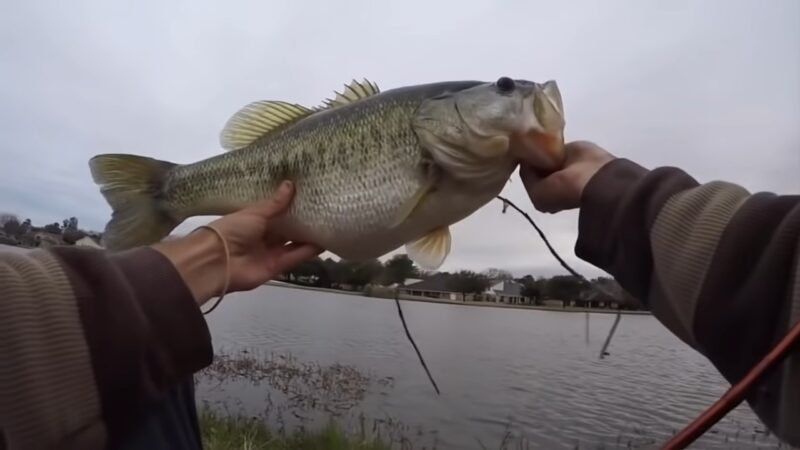
The Larger Sibling
Largemouth Bass are like the bigger siblings of Smallmouth Bass, and they’re often found in warmer, shallower waters.
A Varied Diet
They have a diverse diet that includes smaller fish, frogs, and even small aquatic birds, making them one of the apex predators in the lake.
A Competitive Catch
Largemouth Bass are commonly targeted in competitive fishing tournaments. Their larger size and aggressive behavior make them a challenging and satisfying catch for experienced anglers.
15. Bowfin (Dogfish)
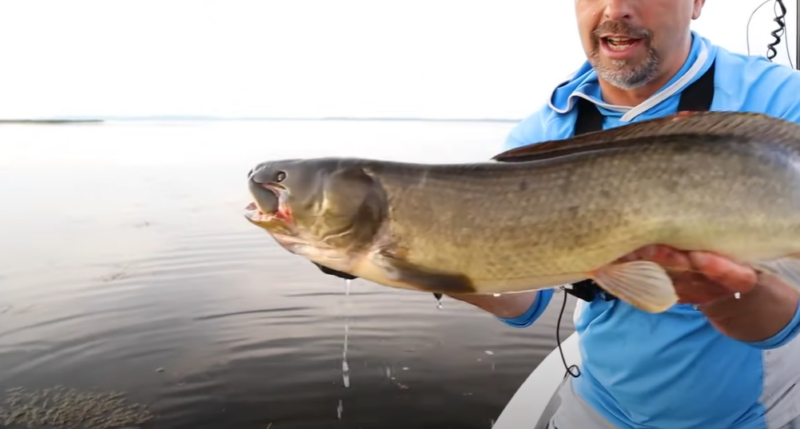
The Prehistoric Native
Bowfin are an ancient species, having been around for millions of years. They can breathe both air and water, making them highly adaptable.
The Loner
Unlike other species that form schools, Bowfin are typically solitary creatures. They’re known for their aggressive behavior and are opportunistic feeders.
The Elusive Catch
Bowfin are less commonly targeted by anglers but offer a unique fishing experience. Their prehistoric lineage and unique features make them a fascinating subject for both scientists and fishing enthusiasts.
FAQs
Are there any non-native species in Lake Michigan?
Yes, several non-native species have been introduced to Lake Michigan, including Rainbow Trout, Brown Trout, Chinook Salmon, and Coho Salmon.
What is the largest fish in Lake Michigan?
The largest fish in Lake Michigan is the Lake Sturgeon, with the official record standing at 193 pounds for a legally caught species.
Are there any dangerous fish species in Lake Michigan?
While not dangerous to humans, invasive species like the Sea Lamprey, Alewife, and Round Goby pose threats to the native fish populations.
Can you eat fish from Lake Michigan?
Yes, you can. However, due to pollution, authorities recommend limiting the frequency of eating some fish species.
What is the lifespan of Lake Trout in Lake Michigan?
Lake Trout can have a long life of over 25 years and can reach impressive sizes, with the record catch weighing over 60 pounds.
What are some popular fishing techniques for Lake Michigan?
Boat anglers often find success by trolling near the lake bottom for species like Lake Trout. Ice fishing is also popular for catching species like Lake Trout and Coho Salmon.
Final Words
Lake Michigan isn’t just a body of water; it’s a dynamic ecosystem, a fisher’s haven, and an environmental treasure trove. From native species that have swum its depths for centuries to more recent arrivals that have found a new home, the lake is a living, breathing entity that continues to captivate and mystify. We hope this guide has given you new insights into this marvelous body of water and the creatures that call it home.
